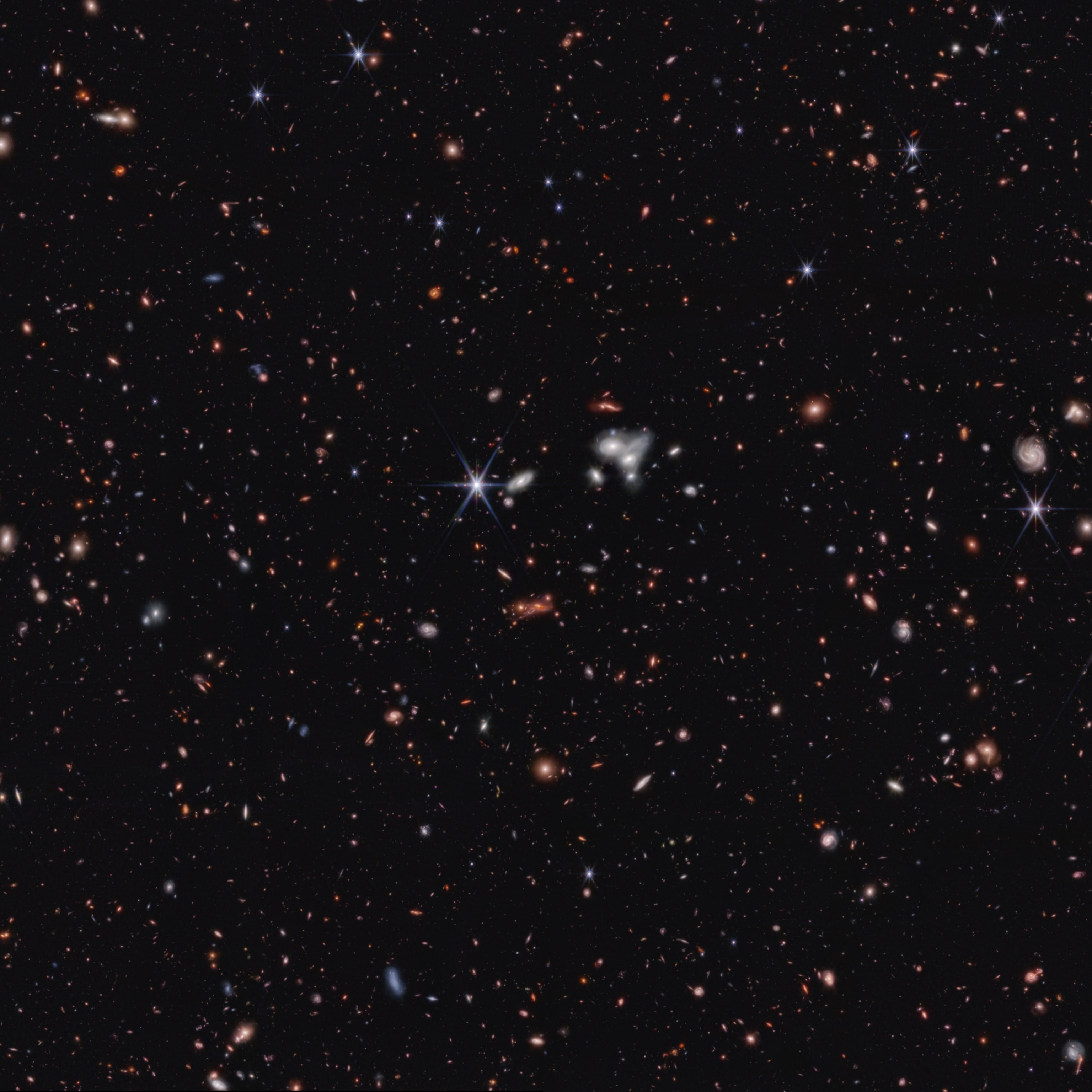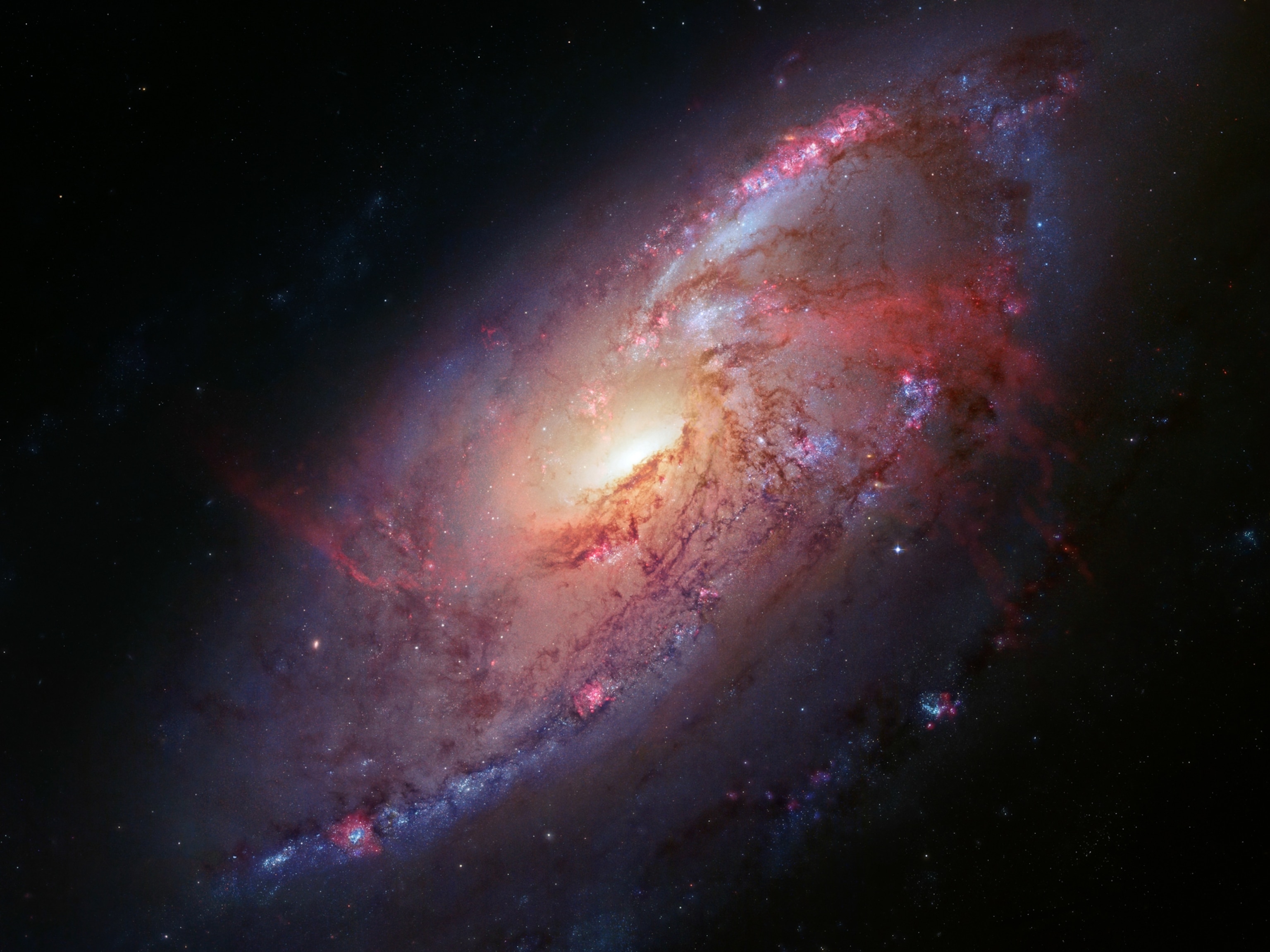
Meet the Woman Who Found the Most Useful Stars in the Universe
When Dame Jocelyn Bell Burnell discovered the first pulsar 51 years ago, she revealed a new tool for solving many mysteries of the cosmos.
Pulsars—whirling stellar corpses that send beams of radio waves across the cosmos—are today’s astrophysical Swiss army knives. With them, scientists can test some of the most fundamental theories in physics, detect gravitational waves, navigate the cosmic ocean, and maybe even communicate with aliens.
But if it weren’t for the work of Dame Jocelyn Bell Burnell, who discovered pulsars in 1967 while still a graduate student at the University of Cambridge, these distant stellar lighthouses may not have become such powerful celestial tools.
Now, 51 years after she first noticed an odd bit of “scruff” in her observations, Bell Burnell has been awarded a $3-million Special Breakthrough Prize in Fundamental Physics. The prize committee not only cites her “detection of radio signals from rapidly spinning, super-dense neutron stars” but also her “lifetime of inspiring scientific leadership.”
Bell Burnell has spent her career working to lift up women and minorities in science. Need proof? She’s donating that $3 million to a charity in the U.K. whose mission is to support physics graduate students from under-represented groups.
“Professor Bell Burnell thoroughly deserves this recognition,” Breakthrough Prize founder Yuri Milner says in a statement. “Her curiosity, diligent observations and rigorous analysis revealed some of the most interesting and mysterious objects in the Universe.”
Scattered throughout the galaxy, pulsars are exotic objects that represent physics at its most extreme. So, how did Bell Burnell find them, and how are they used today? We’ve got you covered.
Blaze of Glory
In 1967, Bell Burnell was working with Anthony Hewish, an astronomer at Cambridge who wanted to find more quasars, which are the distant, extremely bright cores of massive galaxies. To do that, Hewish was scanning the sky and looking for radio waves produced by those quasars. But to really succeed, he needed a new radio telescope.
Luckily, he had just the graduate student for the job: Bell Burnell, one of few women pursuing astronomy there at that time, was sharp, willing, and extremely capable of building a telescope that basically looked like a field full of wire fences.
“I helped build the radio telescope, along with about five others. And when it was built, the rest melted away,” she said during a 2017 meeting celebrating the 50th anniversary of her discovery. “I was left as the first person to run the telescope.”

Little did anyone know at the time, but Bell Burnell was besieged by an extreme case of impostor syndrome, or the feeling that she wasn’t worthy of being at Cambridge. A native of Northern Ireland, she had grown up and been educated in the northern U.K. and wasn’t prepared for what she calls “the suave confidence” of everybody at Cambridge.
“I was quite sure they’d made a mistake admitting me, they’d discover their mistake and throw me out,” she recalled. “But I was a bit of a fighter and said that until they throw me out, I will work my very hardest, so that when they do throw me out, I won’t have a guilty conscience. I’ll know I’ve done my best.”
Determined to go out with as much glory as she could, Bell Burnell ran the telescope for its first six months and discovered about a hundred more quasars—which she did by carefully studying paper readouts (Cambridge only had one computer for the entire university that had essentially no memory and was mostly occupied doing non-astronomy tasks).
Each day, Bell Burnell says, she stared at roughly 900 feet of paper, and over those six months she analyzed more than three miles of fuzzy lines.
Little Green Men
The first sign of something strange emerged on August 6, 1967, in a squiggly stretch of data occupying less than a quarter-inch of Bell Burnell’s readouts.
“I logged it with a question mark and moved on,” she said.
But the minuscule scruff appeared over and over again in the same part of the sky. And even though it was just a tiny anomaly, it lodged in her brain. She eventually pulled all her observations from that same part of the sky, lined them up, and realized she was looking at a cosmic mystery.
Higher-speed recordings made in November 1967 revealed that Bell Burnell had captured a repeating string of radio pulses spaced a bit more than a second apart—keeping time in exquisite fashion—that were unlike anything anyone had ever seen before.
Hewish, her advisor, labeled the scruffy pulses LGM-1 for Little Green Men, as he was convinced the signal was artificial.
Bell Burnell was not.
“I knew it wasn’t artificial, because I’d been tracking this wretched thing for several months,” she said, noting that the source of the signal always rose in the same part of the sky.
Soon, she’d found a second pulsating object, and then a third, and then a fourth, which resolved the question of whether she’d discovered a natural, precise cosmic clock or an alien beacon. The objects came to be known as pulsars, and it took several months before they were identified as spinning neutron stars, which were still largely hypothetical objects at the time.
She and Hewish published a paper describing their discovery in February 1968, and in 1974 the Nobel Prize committee awarded Hewish and his collaborator Sir Martin Ryle a Nobel Prize in physics for their (and Bell Burnell’s) discovery.
“Throughout her life as a scientist, she has placed herself above the Nobel Prize controversy, and instead worked tirelessly in science, public service, and education,” says astronomer Nicholas Suntzeff of Texas A&M University. He describes her as “a heroic person who has done more to advance science across the three pillars of academics—research, teaching, and service—than almost any other living scientist.”
For Bell Burnell, though, making her way to the upper echelons of science was not an easy journey.
“I got engaged to be married between discovering pulsars numbers two and three. [I] was incredibly proud of that engagement ring and wore it to the lab. Which was a mistake, because it signaled that I was quitting,” she said. “At that time in Britain, married women didn’t work. It was shameful if a married woman had to work; it meant her husband couldn’t earn enough.”
The societal pressure to abandon astronomy got worse once Bell Burnell had a son. So she followed her husband around for a couple of years, spending time in gamma-ray astronomy, x-ray astronomy, and infrared astronomy before finally setting up her own astrophysics group. Now, as a visiting professor at the University of Oxford, she’s been able to return to studying her first love: neutron stars, or the extremely dense corpses of formerly large stars.
Prolific Pulsars
Today, thanks to her efforts, pulsars have proven to be among the most useful tools in an astronomer’s toolbox.
The spinning dead stars, which are formed when massive stars collapse and die, keep incredibly precise time, which makes them valuable instruments for measuring the often subtle effects of extreme physics.
As they spin, pulsars emit beams of radio waves, and astronomers can record and track the pulses as those beams wash over Earth. Small deviations in the arrival of those pulses can reveal gravitational waves produced by colliding galaxies or be used to test Einstein’s fundamental theories of relativity.
Pulsars have also been used to weigh the solar system and pinpoint its center of mass, and they are proposed signposts for long-term interstellar navigation. Once, astronomers even used pulsars to make a map that would direct aliens toward Earth’s position in space.
Looking back on her discovery, Bell Burnell says she had no idea how revolutionary it would be.
“Initially, when you stumble on something new, you’re really working in a fog,” she says. “You can see a few things through the fog, but not many. And goodness, haven’t we moved a long way in 50 years?”
Related Photos: Hubble's Greatest Hits










Related Topics
You May Also Like
Go Further
Animals
- Octopuses have a lot of secrets. Can you guess 8 of them?
- Animals
- Feature
Octopuses have a lot of secrets. Can you guess 8 of them? - This biologist and her rescue dog help protect bears in the AndesThis biologist and her rescue dog help protect bears in the Andes
- An octopus invited this writer into her tank—and her secret worldAn octopus invited this writer into her tank—and her secret world
- Peace-loving bonobos are more aggressive than we thoughtPeace-loving bonobos are more aggressive than we thought
- Why are these emperor penguin chicks jumping from a 50-foot cliff?Why are these emperor penguin chicks jumping from a 50-foot cliff?
Environment
- U.S. plans to clean its drinking water. What does that mean?U.S. plans to clean its drinking water. What does that mean?
- Food systems: supporting the triangle of food security, Video Story
- Paid Content
Food systems: supporting the triangle of food security - Will we ever solve the mystery of the Mima mounds?Will we ever solve the mystery of the Mima mounds?
- Are synthetic diamonds really better for the planet?Are synthetic diamonds really better for the planet?
- This year's cherry blossom peak bloom was a warning signThis year's cherry blossom peak bloom was a warning sign
- The U.S. just announced an asbestos ban. What took so long?The U.S. just announced an asbestos ban. What took so long?
History & Culture
- Why Passover is one of Judaism’s most important holidaysWhy Passover is one of Judaism’s most important holidays
- Is this mass grave a result of contagion—or cannibalism?Is this mass grave a result of contagion—or cannibalism?
- The surprising story of how chili crisp took over the worldThe surprising story of how chili crisp took over the world
- We swapped baths for showers—but which one is better for you?We swapped baths for showers—but which one is better for you?
- How a 3,000-year-old tomb upended what we know about ancient PeruHow a 3,000-year-old tomb upended what we know about ancient Peru
Science
- Ground-level ozone is getting worse - here's what that meansGround-level ozone is getting worse - here's what that means
- Would your dog eat you if you died? Get the facts.
- Science
- Gory Details
Would your dog eat you if you died? Get the facts. - In a first, microplastic particles have been linked to heart diseaseIn a first, microplastic particles have been linked to heart disease
- New fossils reveal one of the smallest titanosaurs ever foundNew fossils reveal one of the smallest titanosaurs ever found
Travel
- How citizen science projects are safeguarding Costa Rican pumasHow citizen science projects are safeguarding Costa Rican pumas
- These guides spend their lives looking for dolphins. They’re dogs.These guides spend their lives looking for dolphins. They’re dogs.
- What it's like to hike to the end of the world in ChileWhat it's like to hike to the end of the world in Chile
- These restaurants serve the best steak in Buenos Aires, ArgentinaThese restaurants serve the best steak in Buenos Aires, Argentina







